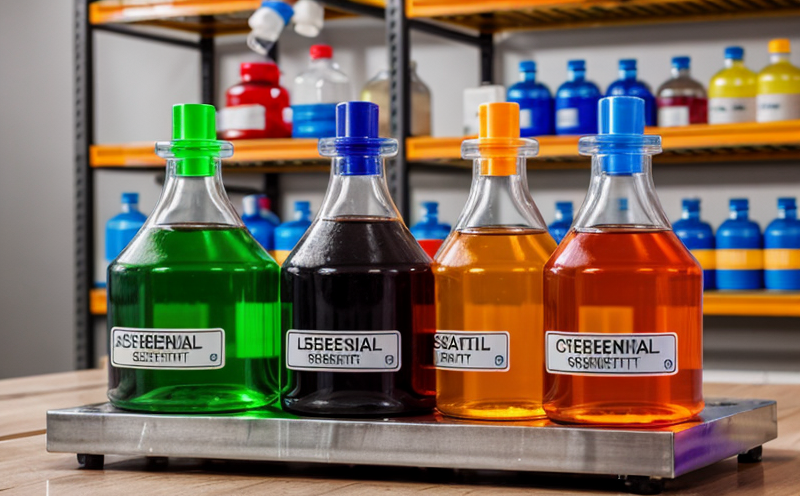Post-Market Restricted Substance Surveillance Testing
In today’s rapidly evolving consumer products market, ensuring compliance with regulatory restrictions on hazardous substances is critical. Post-market restricted substance surveillance testing plays a pivotal role in maintaining the integrity and safety of products after they have entered the marketplace. This service ensures that manufacturers and retailers can confidently meet global regulations without compromising their reputation or customer trust.
Post-market restricted substance surveillance involves ongoing monitoring of consumer products to detect any non-compliance with regulatory standards related to restricted substances. Regulatory bodies such as REACH, RoHS, and others set limits on the use of hazardous chemicals in various product categories. Our service uses advanced analytical techniques to identify and quantify these substances within samples from products already available for sale.
The testing process begins with the receipt of a sample or batch of products. These samples are then prepared meticulously according to industry best practices, ensuring accurate results. Once prepared, they undergo rigorous analysis using state-of-the-art instrumentation like GC-MS (Gas Chromatography-Mass Spectrometry), LC-MS/MS (Liquid Chromatography-Tandem Mass Spectrometry), and ICP-MS (Inductively Coupled Plasma Mass Spectrometry).
The analytical results are compared against the specified limits set by relevant regulations. Compliance is determined based on whether the detected levels of restricted substances fall below or exceed these thresholds. Non-compliance findings can lead to immediate corrective actions, including product recalls if necessary.
Our team provides detailed reports that outline all findings along with recommendations for addressing any issues identified during testing. These insights are invaluable tools for quality managers and compliance officers working across different sectors, helping them stay ahead of regulatory changes while protecting their brands' integrity.
By offering post-market restricted substance surveillance testing services, we aim to support companies in maintaining high standards of product safety and sustainability. Our approach combines technical expertise with cutting-edge technology to deliver reliable results that help businesses navigate complex regulatory landscapes confidently.
Applied Standards
| Standard | Description |
|---|---|
| REACH SVHC | The European Union's Registration, Evaluation, Authorization and Restriction of Chemicals Regulation requires manufacturers to identify and manage the risks from substances of very high concern. |
| RoHS Directive 2011/65/EU | This directive aims at restricting certain hazardous substances in electrical and electronic equipment. Commonly tested elements include lead, mercury, cadmium, hexavalent chromium, polybrominated biphenyls (PBB), and polybrominated diphenylethers (PBDE). |
| California Proposition 65 | This initiative requires businesses to provide clear warnings when their products contain chemicals known to cause cancer or birth defects. |
| Standard | Description |
|---|---|
| EU Plastics Directive (2019/1021) | This directive regulates the production, placing on the market, and use of plastic products, particularly focusing on reducing microplastic pollution. |
| TCPD (Tetrabromobisphenol A) Limits | These limits apply to certain types of textiles and leather products sold in Europe to ensure they do not contain excessive amounts of this flame retardant chemical, which can pose health risks. |
| BFRs (Brominated Flame Retardants) | Banned or strictly controlled under various regulations due to their potential impact on human health and the environment. Specific limits vary by jurisdiction but are commonly enforced through post-market surveillance testing. |
Environmental and Sustainability Contributions
The implementation of effective post-market restricted substance surveillance testing contributes positively towards environmental sustainability efforts by reducing the presence of harmful chemicals in consumer products. By identifying and eliminating these substances, we help minimize their release into natural environments where they could otherwise accumulate over time.
Beyond mere compliance, this service also promotes responsible sourcing practices among manufacturers, encouraging them to seek alternatives for restricted substances whenever possible. This not only enhances product safety but also supports broader sustainability goals by fostering more sustainable supply chains.
Our commitment extends beyond individual projects; we actively contribute to ongoing discussions about improving global regulatory frameworks related to chemical safety. Through collaborative research and advocacy work, we strive to push boundaries in terms of what constitutes acceptable levels of restricted substances in various product categories.
Competitive Advantage and Market Impact
Staying ahead of stringent regulations is crucial for maintaining a competitive edge in today’s market. Our post-market restricted substance surveillance testing service provides businesses with the advantage they need to ensure their products are always compliant, thus protecting brand reputation.
Early detection of non-compliance allows companies to address issues promptly and effectively, avoiding costly penalties associated with product recalls or legal actions. This proactive approach demonstrates a commitment to customer safety and satisfaction, which can significantly enhance consumer trust and loyalty.
In addition to compliance assurance, our service offers valuable data that informs strategic decisions regarding product development and marketing strategies. By understanding the current state of regulatory requirements and trends in restricted substance usage, companies can better position themselves to meet future demands while continuing to innovate within legal boundaries.





